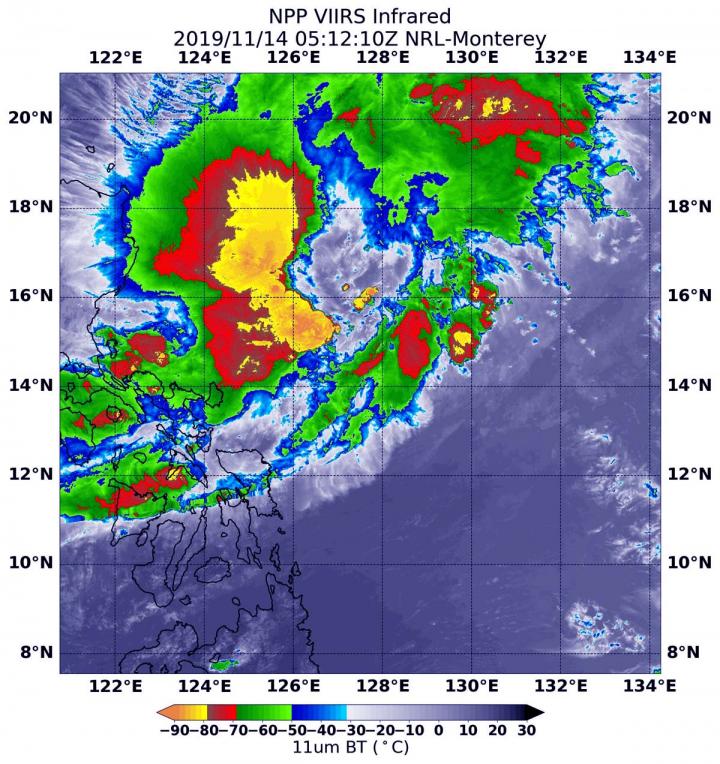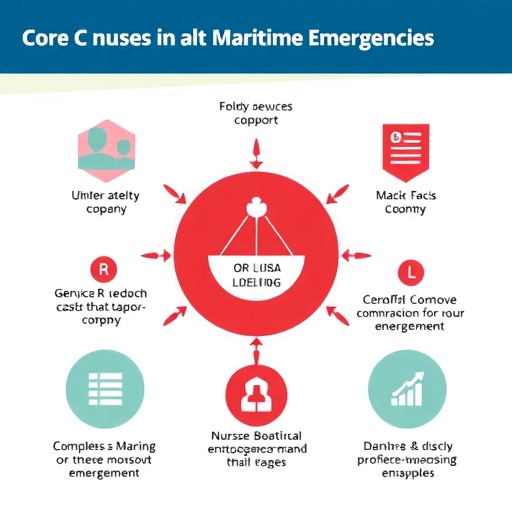
Credit: NASA/NRL
Tropical Cyclone Kalmaegi is still experiencing wind shear and those winds have continued to displace the strongest storms north of the cyclone’s center. NASA-NOAA’s Suomi NPP satellite passed overhead and identified those strong storms using infrared light.
The Visible Infrared Imaging Radiometer Suite (VIIRS) instrument aboard Suomi NPP provided an infrared image of the storm. Infrared imagery reveals cloud top temperatures, and the higher the cloud top, the colder it is, and the stronger the storm. The VIIRS instrument aboard captured an infrared image of the storm on Nov. 14 at 1:12 a.m. EST (0512 UTC). VIIRS showed strong storms in a large area north and northwest of the center, where cloud top temperatures were as cold as minus 80 degrees Fahrenheit (minus 62.2 Celsius). Storms with cloud tops that cold have been found to generate heavy rainfall.
Wind shear seems to be preventing Kalmaegi from consolidating, as the storm is still a tropical depression. In general, wind shear is a measure of how the speed and direction of winds change with altitude. Tropical cyclones are like rotating cylinders of winds. Each level needs to be stacked on top each other vertically in order for the storm to maintain strength or intensify. Wind shear occurs when winds at different levels of the atmosphere push against the rotating cylinder of winds, weakening the rotation by pushing it apart at different levels.
At 10 a.m. EDT (1500 UTC), the center of Kalmaegi was located near latitude 15.3 degrees north and longitude 125.8 degrees east. That is 286 nautical miles east of Manila, Philippines. Maximum sustained winds are near 30 knots (34.5 mph/55.5 kph).
Kalmaegi is moving toward the west-northwest toward a landfall in Luzon, Philippines in the northern part of the country. Landfall is expected in northeastern Luzon on Nov. 16.
###
Typhoons and hurricanes are the most powerful weather event on Earth. NASA’s expertise in space and scientific exploration contributes to essential services provided to the American people by other federal agencies, such as hurricane weather forecasting.
By Rob Gutro
NASA’s Goddard Space Flight Center
Media Contact
Rob Gutro
[email protected]
Original Source
https:/




